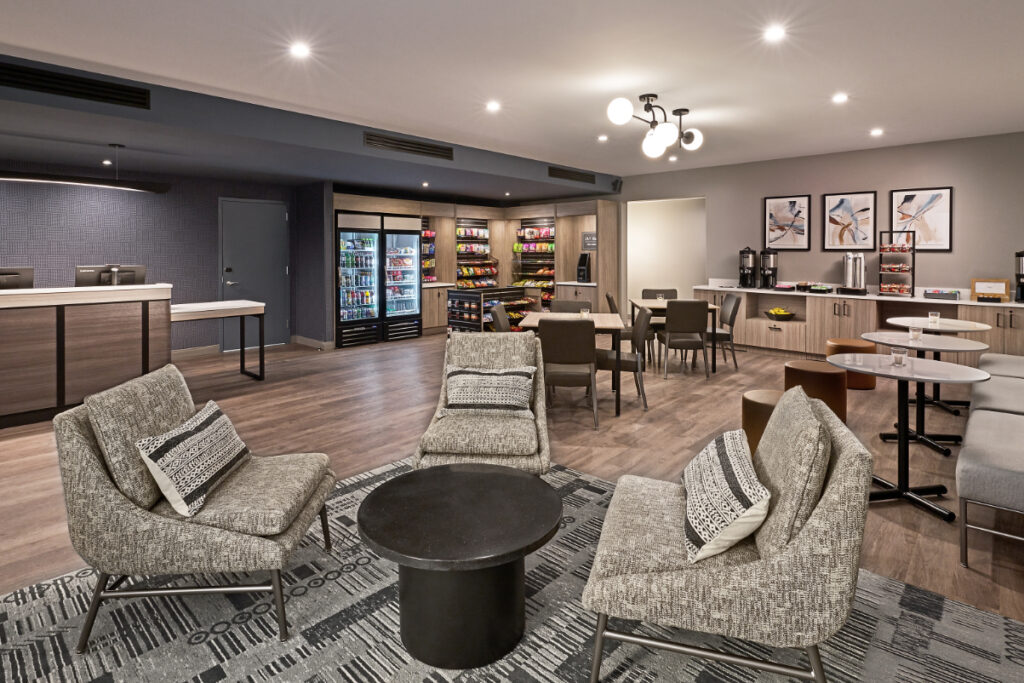Skift Take
Hyatt’s growth strategy seems to boil down to this: build more roadside hotels, not just urban luxury complexes, in places where travelers need to be for practical reasons, without trying too hard to be hip.
When most people think of Hyatt Hotels, they think of either luxury hotels (like the Park Hyatt Tokyo in the movie “Lost in Translation”) or urban business hotels (where your corporation’s annual holiday party takes place).
However, Hyatt sees suburban hotels without the frills as a path to additional growth, moving beyond full-service hotels. They’re quicker to build, cheaper for owners to run, and help fill out the map in places where Hyatt doesn’t yet have a presence.
Hyatt reported a 25% increase in its select-service pipeline in the Americas over the past three years. It now represents over half of the group’s total pipeline in the region.
The company debuted new brand Hyatt Studios a year and a half ago as its first foray into the midscale segment — underscoring the group’s interest in moving “down the scale” toward more streamlined hotel concepts.
Hyatt is also fanning out from urban hubs to smaller towns. Its Hyatt Studios brand has hotels in the works in Harrisonburg, Pennsylvania; Madison, Alabama; and La Verkin, Utah.
To learn more, Skift spoke with Jim Tierney, a senior vice president of development, at this month’s Lodging Conference in Scottsdale, Arizona.
Tierney talked about two brands helping to drive the company’s expansion: Caption by Hyatt and Hyatt Studios.
Caption by Hyatt
Caption by Hyatt, an upscale select-service brand, has undergone a significant refresh since its launch right before the pandemic.
The revamped concept now offers increased market flexibility, a more efficient food and beverage model, and an evolved prototype design.
“We’ve made Caption more operationally streamlined,” Tierney said. “This allows us to expand into a broader range of markets with a more cost-effective model.”
With the Caption by Hyatt brand, the company has simplified its food and beverage operations. They’re responding to developers who argued that not every guest requires a [high-cost] culinary epiphany and that something closer to a continental breakfast will suffice.
Hyatt Studios
Hyatt Studios is a midscale extended-stay brand with about 4,000 rooms in the pipeline and about “250 deals in various stages of negotiations.”
That’s not as strong of a pickup by hotel developers as, say, Hilton has enjoyed with its Spark by Hilton brand, which debuted around the same time in early 2023. There are already 30 Spark by Hilton locations open, with over 175 in the works, compared to no Hyatt Studios being open yet.
Yet Hyatt is a significantly smaller group than Hilton, and Hyatt entered the midscale segment much later. So it’s not fully surprising that Hyatt’s development team has taken time to find its footing.
“Nearly half of our Hyatt Studios pipeline represents first-time Hyatt owners and new markets for us,” Tierney noted.
The bet on Hyatt Studios addresses a key concern for the hotel group: increasing its footprint in markets where it has been lacking representation. Its first property will likely be in Mobile, Alabama, and open on March 31.


Adding Flexibility
A hallmark of Hyatt’s revamped approach to select-service hotels this year is greater flexibility in design and amenities. In the case of Hyatt Studios, owners can decide on features like pools or meeting spaces.
Gone are the days when every Hyatt property was expected to be a carbon copy of its siblings to be strict about brand consistency and avoid confusing guests.
Take, for instance, the matter of pools and meeting spaces in their new Hyatt Studios brand. Rather than mandating amenities and decor with unyielding conviction, Hyatt is leaving the decision to the owners, who can tailor their properties to the whims and needs of local markets.
“If you’re in a sports market or weekend leisure market and a swimming pool helps differentiate you and drive occupancy or demand, then let’s do it,” Tierney said. But not every developer wants to spend the money or have the insurance costs of a pool, so Hyatt doesn’t mandate it for every location.
Hyatt is also rethinking its approach to renovations, tying them to performance metrics rather than the arbitrary passage of time. Hotels that meet certain standards can push out their seven-year renovation cycles, a move that’s less about procrastination and more about pragmatism, Tierney said.
Loyalty Program Component
At first, it may seem surprising that Hyatt would want to downscale into select-service. Other hotel groups with large footprints in select-service, like Wyndham, Choice Hotels, and BWH Hotels, are eagerly trying to add brands that move them upscale into premium and luxury instead because they covet the higher rates those brands can charge.
Tierney said that in Hyatt’s case, aggressively expanding its select-service portfolio, with a strategic focus on new brands and untapped markets, is partly about amplifying the power of its loyalty program.
“The same reasons we got into upscale select-service brands Hyatt Place and Hyatt House back in 2005 are the same reasons we’re now entering upper midscale select service,” Tierney said.
“Members in the World of Hyatt loyalty program told us they wanted more locations in more places where they have to be so they can stay within the system,” Tierney said.
“For owners, we can offer them more World of Hyatt members as guests who tend to book in the more cost-effective direct booking channel. That helps us get more owners thinking about us when they’re doing their next project and helps us get a bigger piece of the pie.”
More on Midscale Hotel Brands
Updated Oct. 1, 2024
Accommodations Sector Stock Index Performance Year-to-Date
What am I looking at? The performance of hotels and short-term rental sector stocks within the ST200. The index includes companies publicly traded across global markets, including international and regional hotel brands, hotel REITs, hotel management companies, alternative accommodations, and timeshares.
The Skift Travel 200 (ST200) combines the financial performance of nearly 200 travel companies worth more than a trillion dollars into a single number. See more hotels and short-term rental financial sector performance.
Read the full methodology behind the Skift Travel 200.
